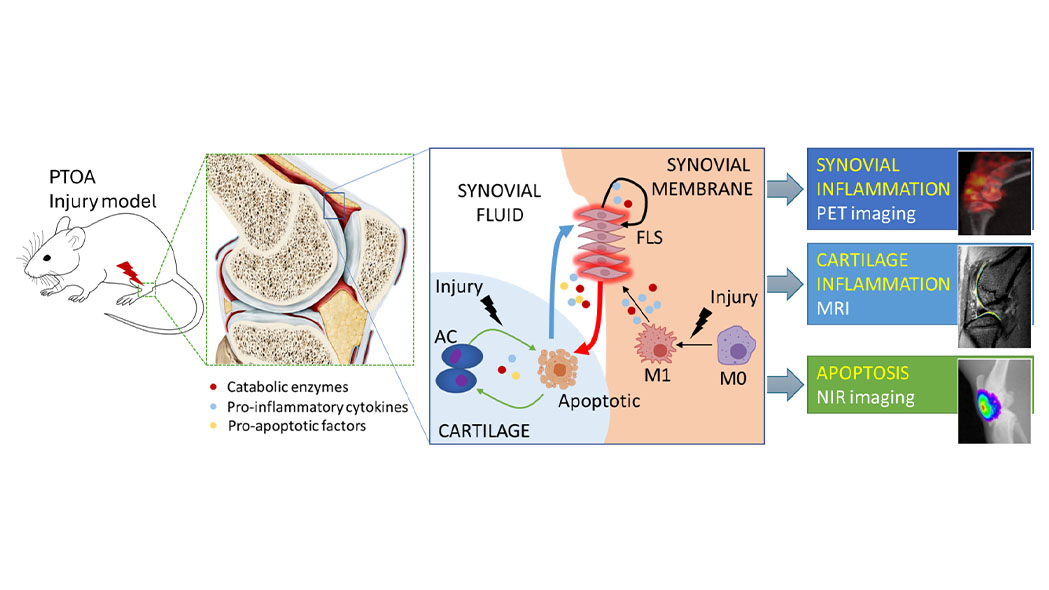Imaging and Therapeutic Targeting of Tissue Crosstalk in the Injured Knee

Overview
In this project we use in vitro and in vivo methods to study the complex relationship between inflammation and apoptosis (programmed cell death) in post-traumatic osteoarthritis.
Knee injury is often followed by post-traumatic osteoarthritis (PTOA), a condition that for many leads to knee replacement. There is no cure for PTOA, nor is there sufficient understanding of the disease’s underlying mechanisms. The condition poses particular clinical challenges in young patients who are risk of an early knee replacement and consequent revision surgeries. In this investigation, we study the relationship between apoptosis and inflammation—two key pathways of PTOA—in order to develop novel therapeutic strategies that target PTOA progression.
In vitro, we analyze gene expression and examine paracrine signaling to investigate how inflammation and apoptosis interact in articular chondrocytes and synovial cells. We also evaluate the efficacy of therapies that attempt to restore cellular balance by targeting both inflammation and programmed cell death. In vivo, we use MRI to track cartilage inflammation, PET imaging to track synovial inflammation, and optical imaging to detect apoptosis. This multimodal approach is designed to provide a better understanding of the relationship between inflammation and apoptosis, including whether inhibiting one impacts the other.
By gaining insight into the intricate interplay between these processes, we aim to develop novel therapeutic strategies that target both pathways in order to prevent PTOA progression and improve outcomes for affected people.
Keywords
- Post-traumatic Osteoarthritis (PTOA)
- Multimodal Molecular Imaging
- Early Detection
Project Team
External Collaborators
- Thorsten Kirsch, PhD , NYU Langone Health
- Richard Kijowski, MD , Hospital for Special Surgery
- Aristotelis Tsirigos, PhD, NYU Langone Health
Publications
- Ruiz A, Duarte A, Bravo D, Ramos E, Zhang C, Cowman M, Kirsch T, Milne M, Luyt LG, Raya JG, In vivo multimodal imaging of hyaluronan-mediated inflammatory response in articular cartilage; Osteoarthritis Cartilage, 30(2), 2022, pp. 329–340.
Acknowledgements
We acknowledge support from the following NIH grant: NIH NIAMS R01AR082670








